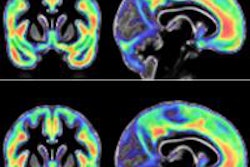Using MRI data and a computer model of the brain, researchers from Stanford University have found new evidence that concussions are caused by brain and skull rotation.
The findings mean that helmet-testing equipment and conventional detection techniques may not be adequately evaluating all potential causes of concussions. The standard test for football helmets used in the college and professional ranks involves a device that drops a helmet-clad dummy head from multiple heights to approximate various impact magnitudes.
David Camarillo, an assistant professor of bioengineering, and his students compared field data from sports-related head impacts, which they collected for several years from Stanford football players who wore mouthguards fitted with accelerometers. From those devices, they found that players frequently experienced head oscillations in the 20-Hz range.
In addition, MRI and a computerized brain model revealed that the brain's relative motion is amplified when the head oscillates at 15 Hz to 20 Hz, completing a single back-and-forth motion in about 50 msec.
High rotational velocities, which are thought to induce brain strain and have been predictive of concussions, were observed in the field impacts but not the drop tests. And while field data showed rotational head motions in the 15- to 20-Hz range, drop tests generated movements of 100 Hz.
The study suggests there's room for improvement in testing, Camarillo said, adding that there should be more government regulation in standardizing helmet evaluation.



.fFmgij6Hin.png?auto=compress%2Cformat&fit=crop&h=100&q=70&w=100)




.fFmgij6Hin.png?auto=compress%2Cformat&fit=crop&h=167&q=70&w=250)











